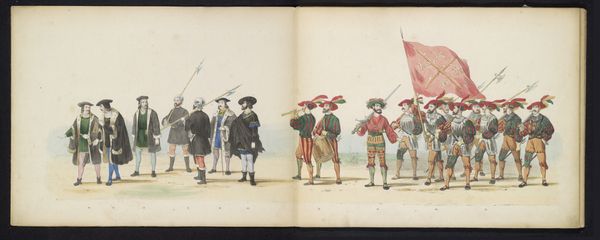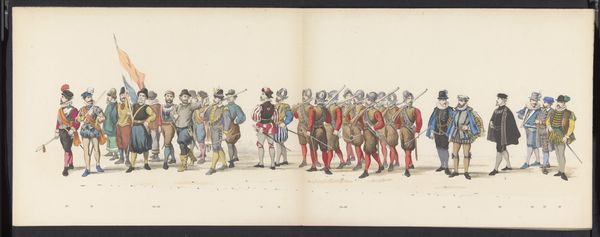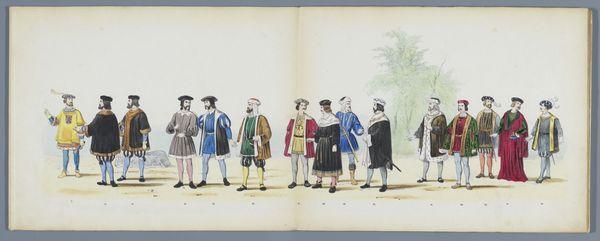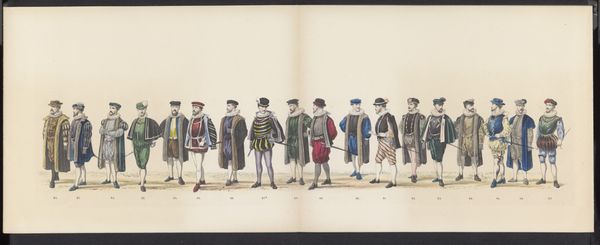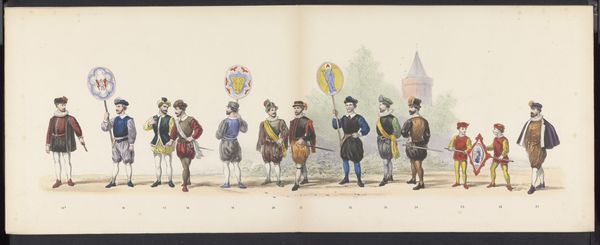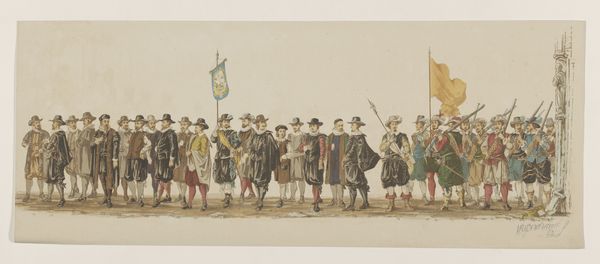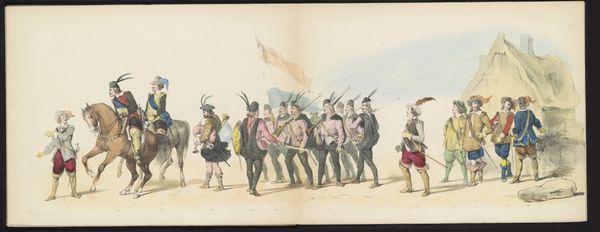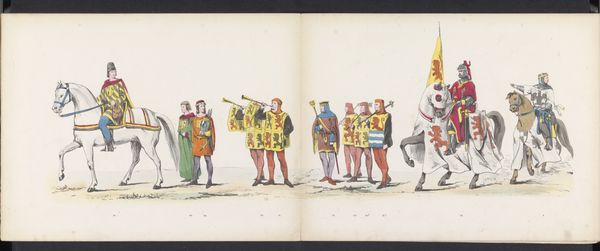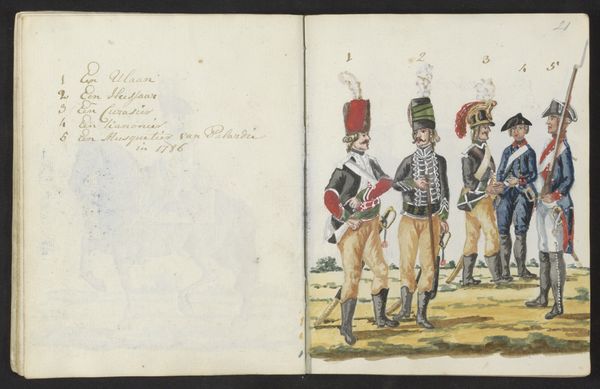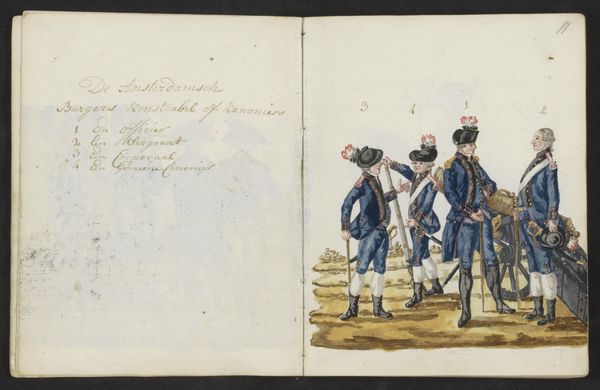
Dimensions: height 280 mm, width 730 mm
Copyright: Rijks Museum: Open Domain
Editor: Here we have Gerardus Johannes Bos's "Masquerade of Leiden Students, 1855," a charming watercolor and colored pencil drawing. The students appear organized into groups by color-coded outfits; I wonder, what sort of context might be embedded in those striking choices? Curator: The costumes certainly offer a critical point of entry. Given the date, consider the burgeoning rise of historical societies and romantic nationalism throughout Europe. Such groups actively constructed and performed imagined pasts to forge cultural solidarity, a process intensely invested in shaping a public role for history. Are the students then appropriating an earlier historical period to reflect contemporary values, perhaps constructing a symbolic narrative about Leiden’s history? Editor: That's interesting! Are you suggesting they might be drawing parallels between themselves and some other historical period, creating a visual manifesto of sorts? How do we know what their claims might have been, beyond pure speculation? Curator: Good question! Looking closely at the imagery on the banner – could those be civic or corporate emblems, re-imagined? Think about how similar parades and performances functioned – consider for example the lord mayor's shows or festival books more generally. These student masquerades could then function as forms of social commentary or even playful resistance, especially in relation to their University's perceived public image. Editor: I had only noticed the striking colours. You’ve shown me how that banner acts almost like a kind of university manifesto, open for public debate! Thanks! Curator: My pleasure! It’s fascinating to consider the masquerade not merely as a colourful spectacle, but a socially charged performance of collective identity and cultural memory.
Comments
No comments
Be the first to comment and join the conversation on the ultimate creative platform.
